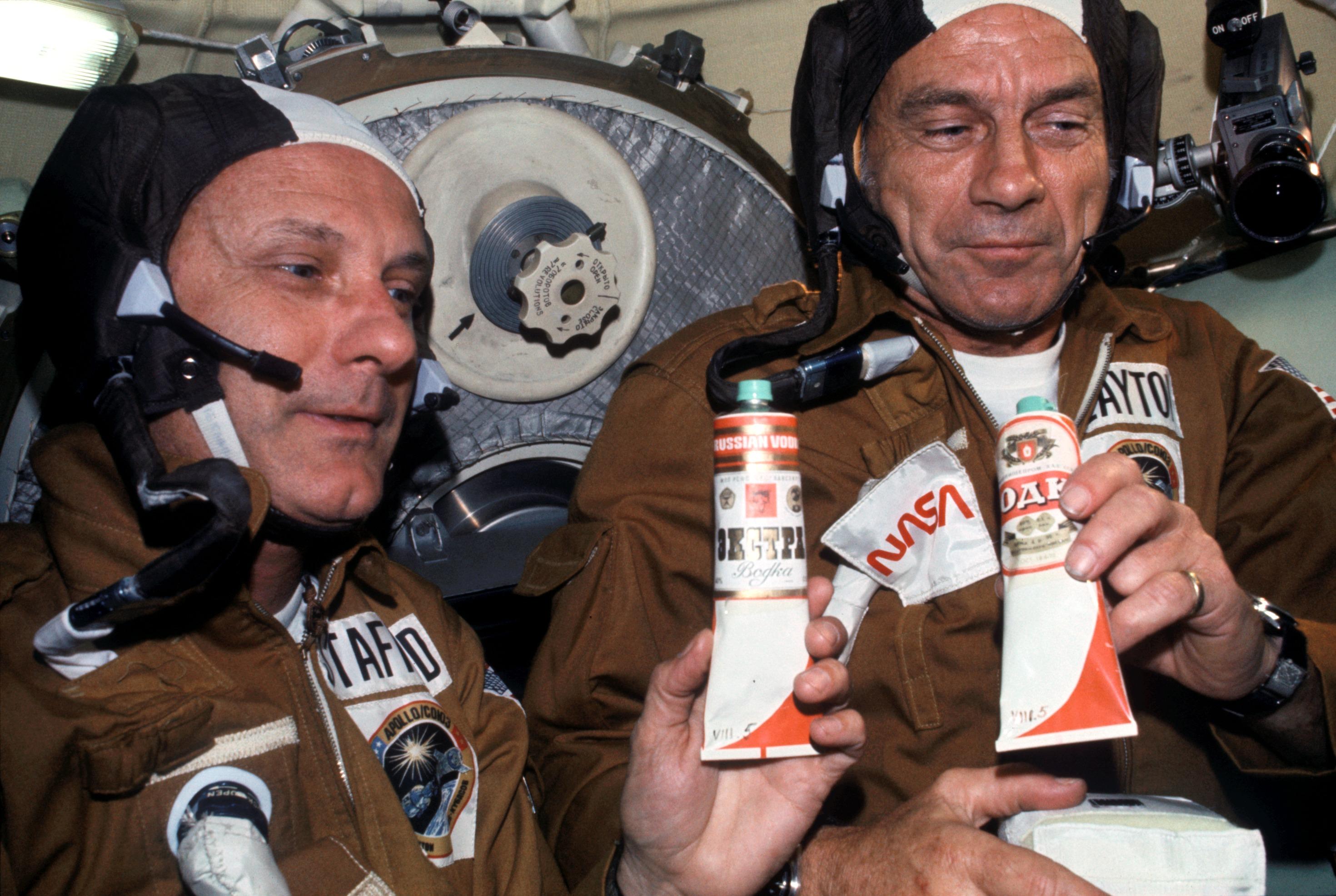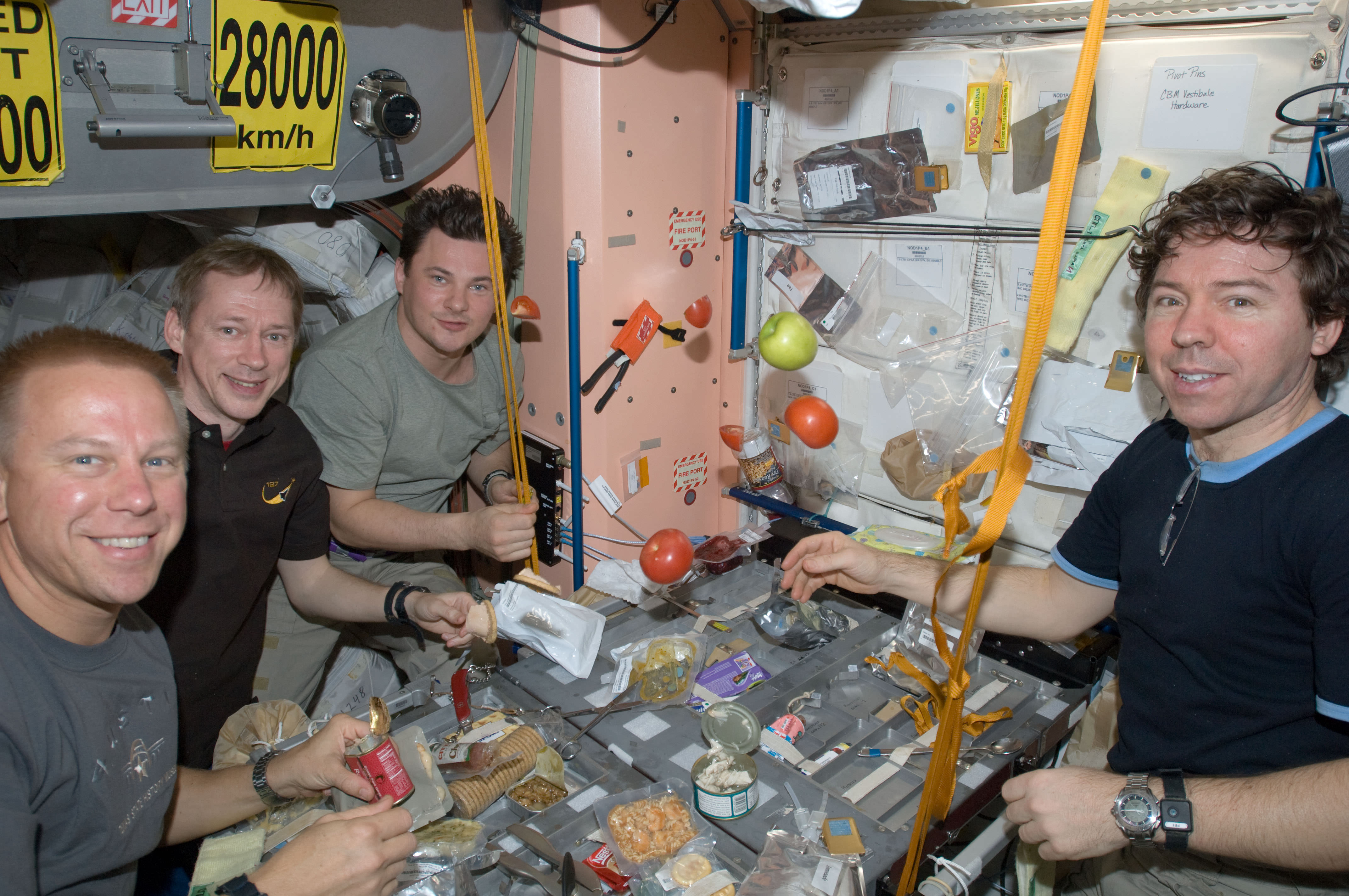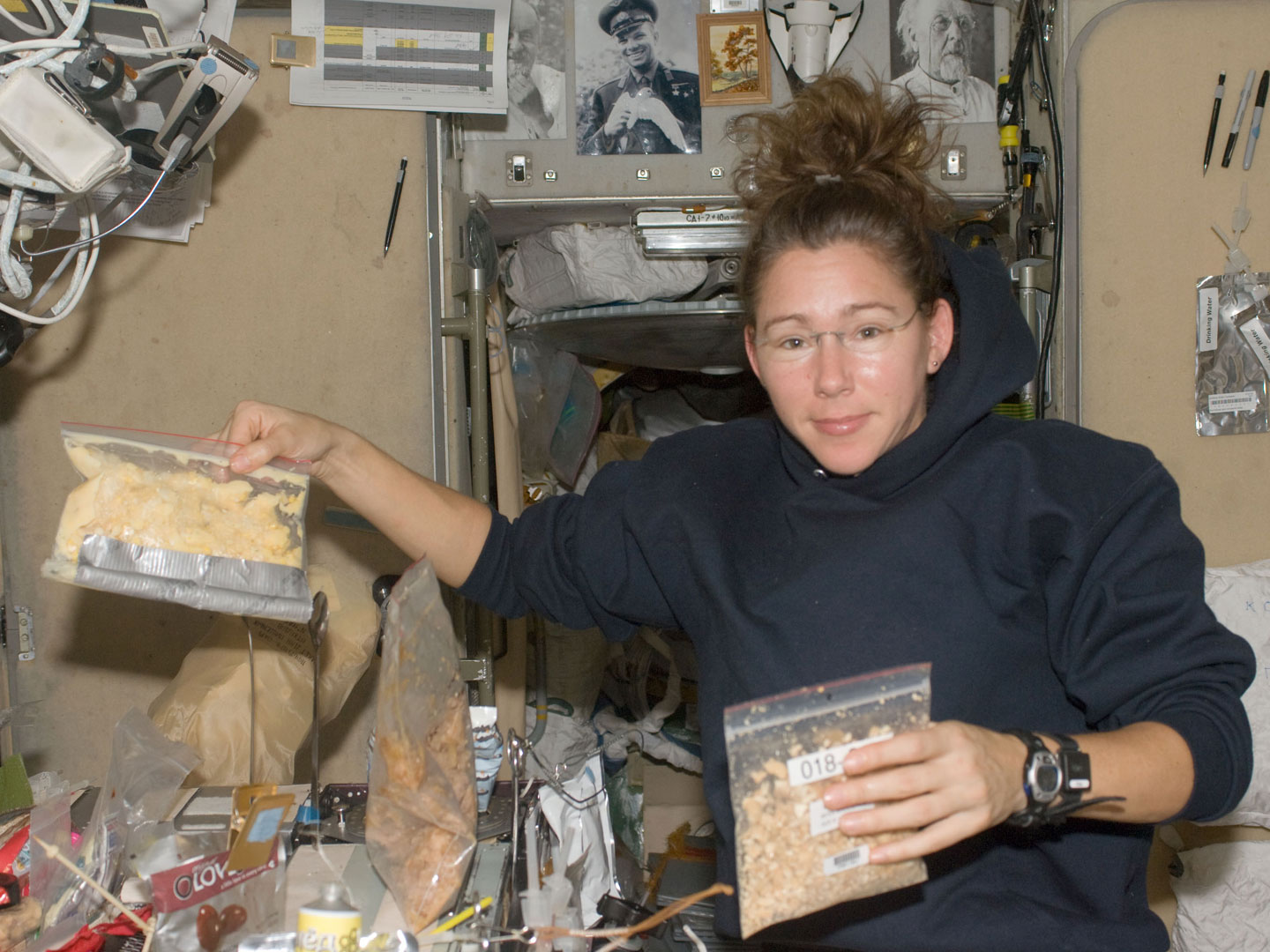Outside of Earth's atmosphere, astronauts have to learn new ways to eat. They don't have the resources in a spaceship that we have on our planet, so they make do with freeze-dried fruits and vegetables, dehydrated meals, and liquidized salt and pepper.
Before much technology was developed for meals in space, astronauts ate food from a tube filled with puréed fruits and vegetables. This way of eating was not considered very appetizing, and many astronauts did not enjoy squeezing their food directly into their mouths. They could also eat freeze-dried powders and bite-sized cubes that were equally uninviting.
As more and more people went into space, the culinary advantages expanded into more edible meals. Nutrition was taken more seriously in space as well. During the Gemini missions in 1965-1966, astronauts ate foods including shrimp cocktail, applesauce, chicken and vegetables, butterscotch pudding, and toast squares. Rehydration methods were simplified, making it easier to bring more food onto spaceships.
For the Skylab space station, eating became more domestic with new dining tables and trays that could warm their food while they ate. There were brand new freezers on the spaceships as well, allowing even more variety for enjoyable foods. Butter cookies, ice cream, fresh bread, and processed meat products were among some of the new menu choices.
Although there was more variation for consumption, astronauts still believed that it wasn't very satisfying. This was because the atmosphere (or lack thereof) in space changes how your tastebuds perceive food. Smelling and tasting is dulled in outer space due to congestion from weightlessness.
Today, meals can be enjoyed at any temperature, and astronauts can even request meals from home like beef jerky, spaghetti, and fruit salad and could be easily brought into space. Through dehydration processes and freeze drying the food, al different types of sustenance can be eaten outside of our planet's atmosphere.
All of the astronauts' meals are planned eight to nine months ahead of time. There are mathematic equations that help scientists to get the travelers the calories they need, like the basal energy expenditure formula that varies based on the astronaut's weight, age, gender, and height. This helps minimize the amount of necessary food for the trip, while also making sure they have enough.
When packaging food for space trips, scientists must use special tools in order to dehydrate food for preservation. Things like drinks and other liquidized foods will be turned into a rehydratable powder or mix so that it doesn't spoil before consumption. Here is a document explaining the exact formulas for executing this procedure.
Some astronauts are figuring out new ways to cook food in space so that there's plenty of delicious variety when they're away from home. Sandy Magnus worked hard to make space food more interesting, flavorful, and nutritious. Here is her complete diary of her food adventures.
While our current technology for outer-space nourishment are advanced, there is always room for improvement. The process will continue to adapt accordingly, and so will the national space station. All information about space habits are available on NASA's website, chock-full of articles and explanations, and even some simple ones for little ones.





Yes you are so right about always improving
ReplyDelete